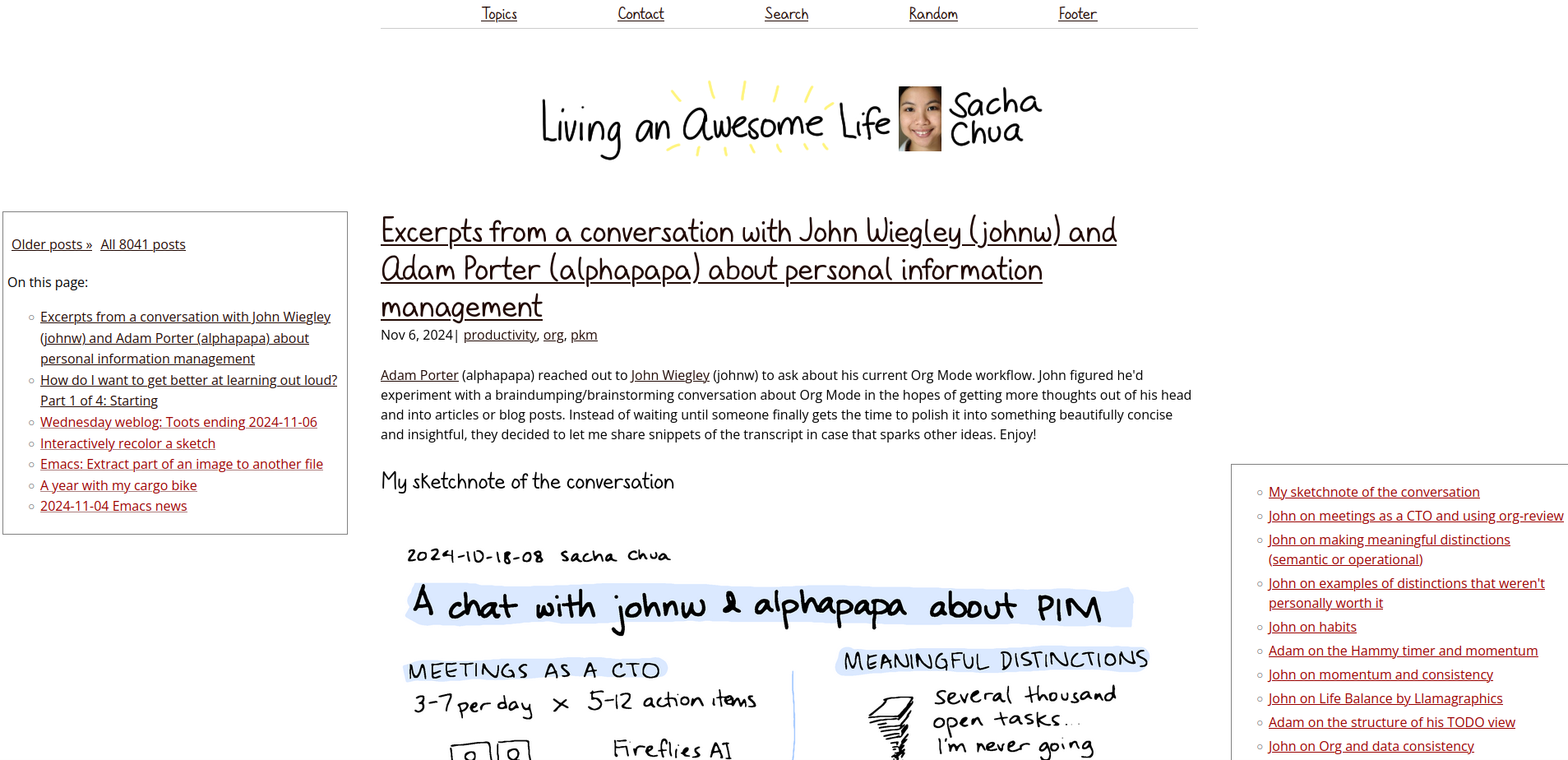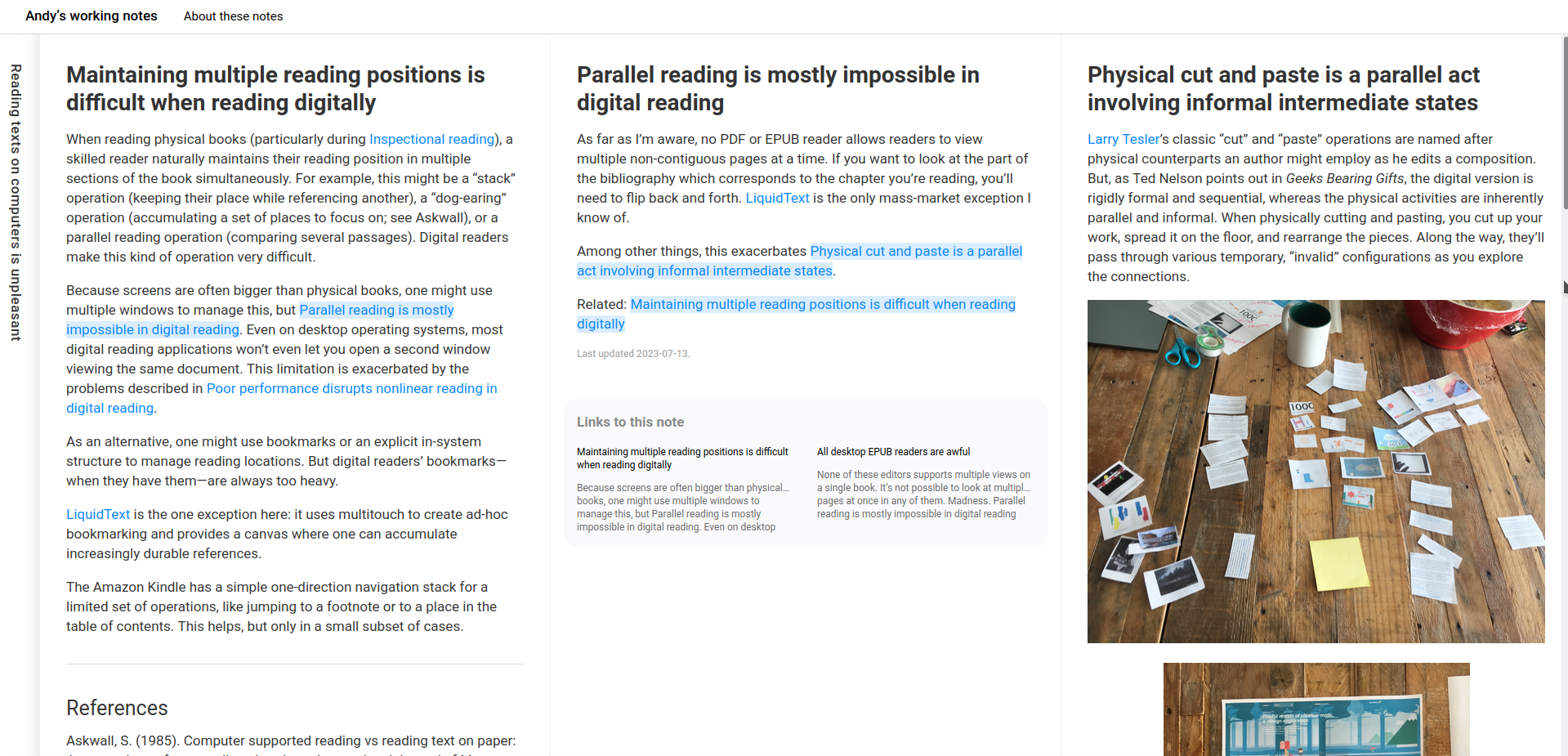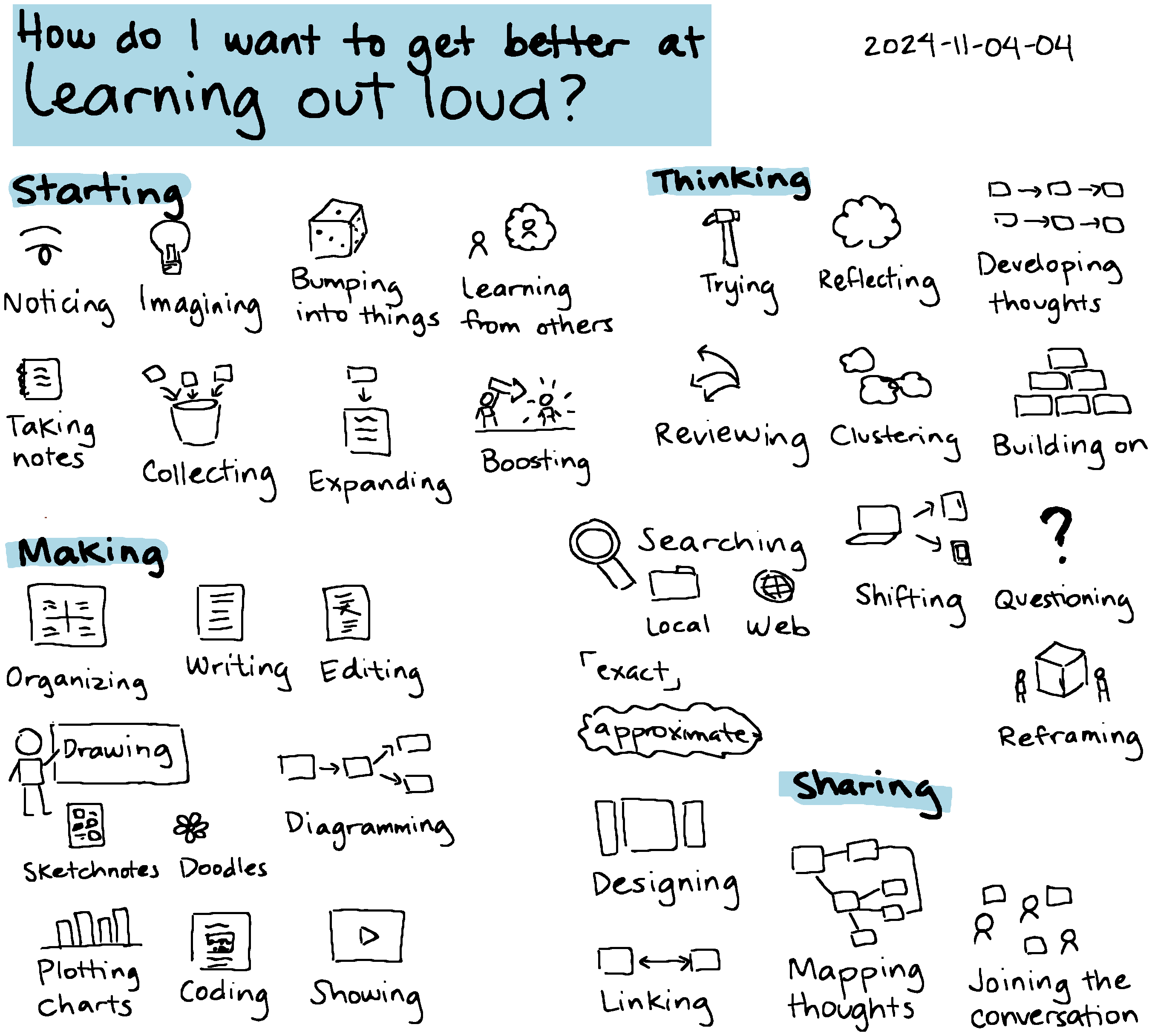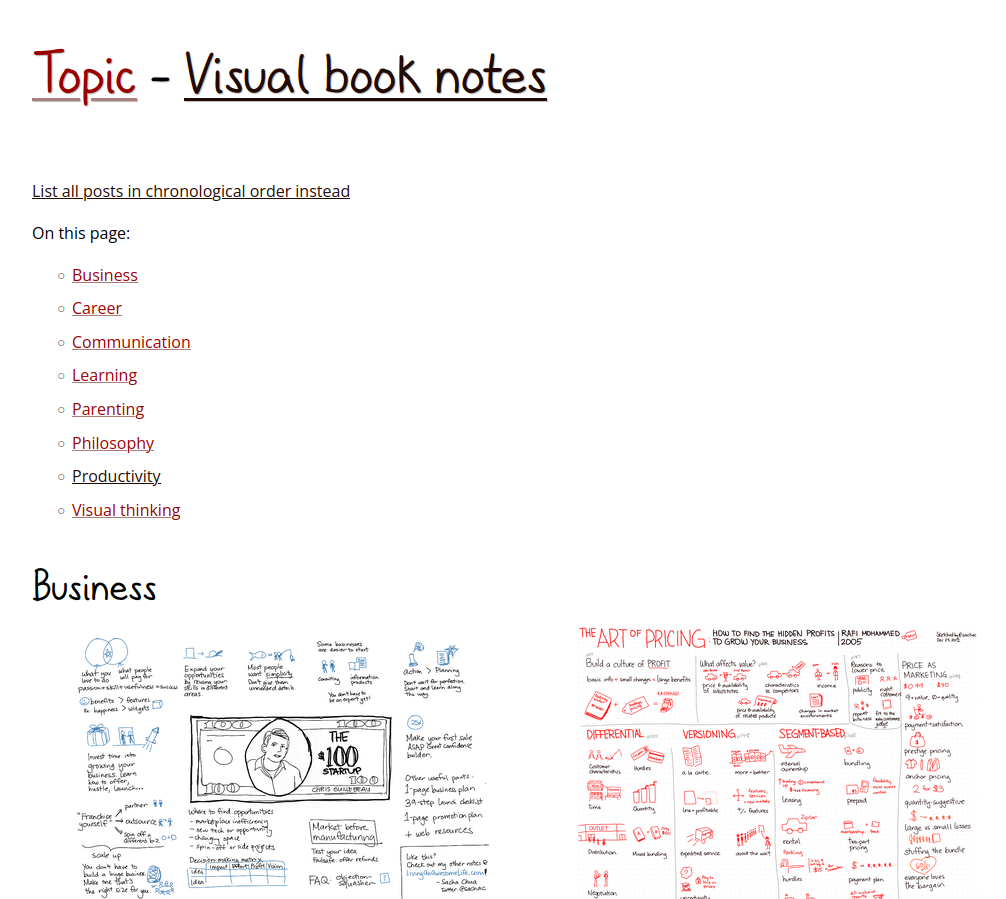Playing with chunk size when writing
| blogging, writingHow long is a blog post? Some people write short posts with one clear thought. Others write longer essays.
I tend to start out writing a short post and then get distracted by all the rabbit-holes I want to go down. Drafting my thoughts on blogging leads to adding lots of blogs to my reader, writing some code that takes an OPML and makes a table of blogs and their most recent posts, fixing the org-html-themes setup for my Emacs configuration, breaking out this chunk as its own post, drawing a bunch of mindmaps, doing a braindump, tweaking my workflow for processing braindumps to use faster-whisper and whisper-ctranslate2 instead of WhisperX because of this issue, so that I can try the whisper-large-v3-turbo model, experimenting with workflows for reviewing the PDF on the iPad… Definitely lots of yak-shaving (wiktionary definition). I still want to write that post. I already have the sketch I want to include in it. It's like Chilli in the Bluey episode Sticky Gecko (script): "The door: It is right here. All we need to do is walk out of it: it's so easy!" The thought! It's right there! Just get to it, brain! But I wander because I wonder. I suppose that's all right.
It might be fun to play around with the sizes of things I share: shorter when my attention is fragmented or squirrely, longer when I can think about something over several days or years. Here are some ways to tinker with that.
Breaking thoughts down into smaller chunks so I can get them out the door:
- When I notice that something is a big blog post (like this reflection I've been working on about blogging), I can break out parts of it into their own blog posts and then replace that section with links.
- I can post interesting quotes and snippets to Mastodon and then round them up periodically or refer to them in blog posts. TODO: It might be good to have a shortcut for an accessible link to a toot using a speech bubble or similar icon.
Taming my tangents and ideas: I'm sometimes envious of blogs with neat side notes, but really, I should just accept that the tangents that my mind wants to go on can take paragraphs and are more suited to, say, collapsible details or a different blog post. Something I can experiment with: instead of gallivanting off on that tangent (soo hard to resist when there's an idea for an Emacs tweak!), I can add a TODO and leave it for my future self. Maybe even two TODOs: one inline, where it makes sense in the text; and one in my Org Mode, with a link to the blog post so that I can go back and update it when (if!) I get around to it. Who knows, maybe someone might comment with something that already exists.
Saving scraps: It's easier to cut out half-fleshed-out ideas if I tell myself I'm just saving them somewhere. Right now I capture/refile them to a scraps heading, but there's probably a better way to handle this. Maybe I can post some thoughts to Mastodon and then save the toot URL. Maybe I can experiment with using Denote to manage private notes.
Connecting thoughts and building them up:
- I tend to write in small chunks. (TODO: I could probably do some kind of word-count analysis, might be neat.) Sketchnotes and hyperlinks might help me chunk thoughts so I can think about bigger things. I can link to paragraphs and text fragments, so I can connect thoughts with other parts of thoughts instead of trying to get the granularity right the first time around. The shortcuts I made for linking to blog posts and searching the Web or my notes are starting to help.
- I sporadically work on topic maps or indices. Maybe I'll gradually flesh them out into a digital garden / personal wiki.
- Sometimes I don't remember the exact words I used. Probabilistic search or vector search might help here, too. I don't need an AI-generated summary, I just want a list of related posts.
- I can figure out how to add backlinks to my blog, or simplify the workflow for adding links to previous posts. Maybe something based on this guide for 11ty or binyamin/eleventy-plugin-backlinks. I might need to write something custom anyway so that I can ignore the links coming from monthly/weekly review posts.
Connecting to other people's thoughts: For the purposes of conversation, it'll probably be good to let people know if I write something about their blog post. Doesn't happen automatically. Pingbacks and referrer logs got too swamped by spam a long time ago, so I don't think anyone really uses them. Idea: It might be neat to have something that quickly lists all the external links in a post, and maybe a way to save the e-mail addresses or Mastodon handles for people after I look them up so that I can make that even smoother, and some kind of quick template. I can send email and toot from within Emacs, so that's totally doable… (No, I am not going to write it right now, I'm going to add it to my to-do list.)
(Also, there's another thought here about books and The Great Conversation, and blogs and smaller-scale conversations, and William Thurston and mathematicians and understanding, and cafes…)
Hmm. I think that getting my brain to make smaller chunks and get them out the door will be a good thing to focus on. Synthesizing can come later.
Related:









